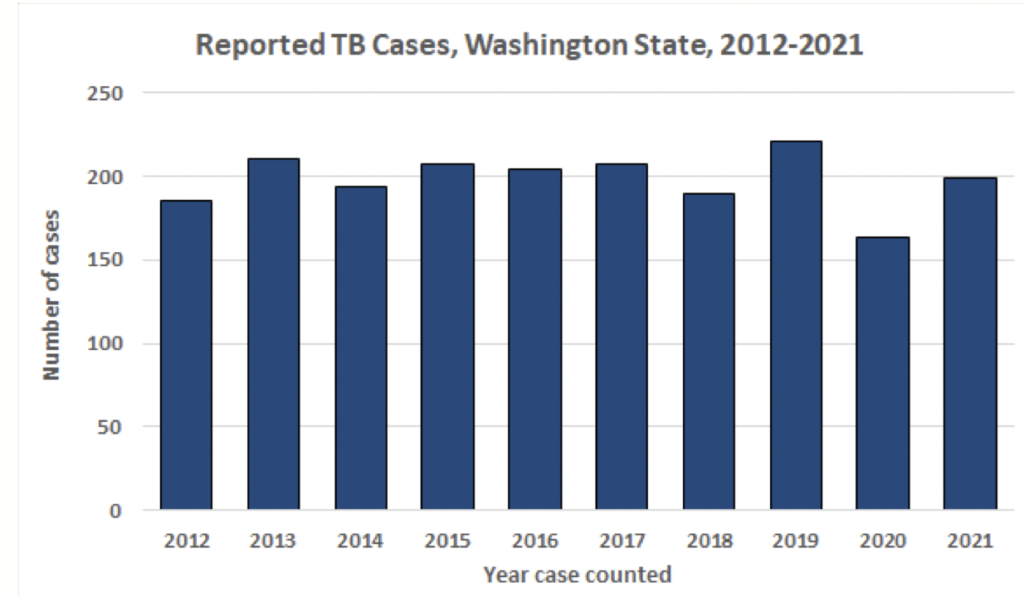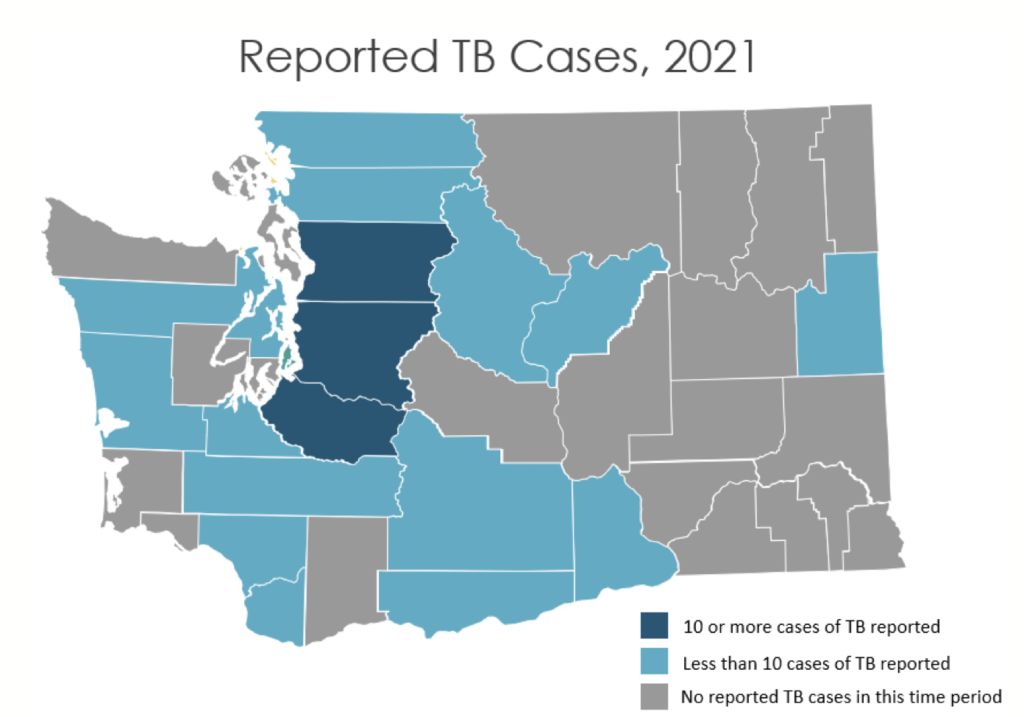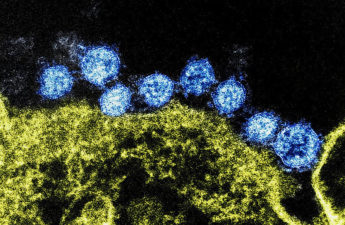
Washington State Department of Health
OLYMPIA –Washington’s tuberculosis (TB) cases are on the rise, putting state and local public health officials on heightened alert. Widespread disruptions in public health and healthcare services and missed TB diagnoses due to similarities in symptoms between COVID-19 and TB are thought to have contributed to TB cases rising both locally and globally.
TB reporting decreased in 2020 during the first year of the pandemic. Though efforts to prevent COVID-19 may also reduce the spread of TB, the decrease could also have been due to delayed or missed TB diagnoses because of strains in the health care system. Some people with TB may also have been misdiagnosed as having COVID-19.
Cases then rose notably beginning in 2021, when 199 cases of TB disease were reported, a 22% increase from 2020. Thus far in 2022, 70 cases have been reported and officials continue to monitor the situation closely. Seventeen new cases of TB disease all have connections with each other and several Washington state prisons, making it the state’s largest outbreak in the last 20 years.

“It’s been 20 years since we saw a cluster of TB cases like this,” says Tao Sheng Kwan-Gett, MD, MPH, Washington State Chief Science Officer. “The pandemic has likely contributed to the rise in cases and the outbreak in at least one correctional facility,” added Kwan-Gett. “Increased access to TB testing and treatment in the community is going to be key to getting TB under control.”
“Washington State Department of Corrections (DOC) identified a rise in cases in one of our facilities and immediately began working closely with the Department of Health and the Centers for Disease Control on testing, as well as ways to decrease the spread in the facility and out in the community,” said DOC Chief Medical Officer MaryAnn Curl, MD. “Testing of staff, and our incarcerated population at Stafford Creek Correction Center continues, which is how these cases were found. We’ll continue to communicate with staff, their incarcerated population and their families as appropriate.”
Knowing the facts helps to understand TB, which is preventable, treatable, and curable. Like COVID-19, TB is spread through the air when an infected person coughs or sneezes and the organism is breathed in by others. But unlike COVID-19, more prolonged exposure to someone with TB disease is typically necessary for infection to occur. Symptoms of TB disease can include coughing, with or without blood, and chest pain. General symptoms also include fever, night sweats, weight loss and tiredness.
If infection does occur the person exposed will most likely develop inactive TB or (also called latent TB infection), which does not have any symptoms and is not contagious. But if people with inactive TB do not receive timely diagnosis and treatment, the infection could develop into active TB disease which can then cause symptoms and be spread to others. An estimated 200,000 people in Washington have inactive TB.
Treatment for TB disease takes six months at a minimum. If treatment isn’t diligently followed, symptoms are likely to become more severe and patients risk continuing to be contagious, increasing the likelihood of TB further spreading within the community. Incomplete treatment can also contribute to the spread of antibiotic resistant strains of TB.
TB can infect anyone, but some people may be at increased risk for exposure including:
- Those in close contact with someone who has TB disease.
- People who are from, or frequently travel to, areas of the world where TB is more common.
- People who live or work in a setting where there is more possible exposure to TB, such as homeless shelters, correctional facilities, and nursing homes.
DOH encourages people at risk for TB to get tested and, if the outcome is positive, to get treatment. More information about TB can be found at Facts About TB | Washington State Department of Health.
Resources:


